Ethics, Stakeholder, EDII, & CSR Project Memorandum
.docx
keyboard_arrow_up
School
University Canada West *
*We aren’t endorsed by this school
Course
601
Subject
Business
Date
May 13, 2024
Type
docx
Pages
10
Uploaded by MateMoonYak12
1
Ethics, Stakeholder, EDII, & CSR Project Memorandum
Olaoluwa Opaola (2206218)
University Canada West
BUS 601: Ethics, CSR & Business Analysis
Prof. Jack Smith
November 3, 2023
2
To: HCI Incorporated
From: Olaoluwa Opaola, Business Consultant
Subject: Ethics, Stakeholder, EDI, & CSR Recommendations Date: 5th November, 2023
Introduction
HCI Inc. is a successful real estate company owned by Alex Jones, an indigenous capitalist of the Plains Cree ancestry. For his upcoming retirement, Alex wants to build a state-
of-the-art light-tech industrial park on a farmland that is being returned to the Stz’min’us First Nation (SFN) as part of a treaty settlement between British Columbia, Canada, and SFN, as this is the most profitable location for the park. However, although Alex is indigenous, he is a foreigner in this territory and is “anti-
woke” regarding equity, diversity, and inclusion. To successfully carry out this project, HCI Inc. requires my recommendations concerning Stakeholders, Ethics, CSR, and EDI issues that may result from or impact the project, and how to handle them.
Based on the slideshow of the stakeholder approach by DeBeers and Platinex, and Sexty, R. (2020). Canadian Business & Society: Ethics, Responsibilities, and Sustainability. 5th Edition, I recommend the DeBeers approach of successful collaboration with all stakeholders for
mutually beneficial results. Furthermore, I recommend a collaborative value-based ethics, CSR, and EDI management plan led by an ethical leader like Jacqueline Jones and centered around a code of ethics, a social contract for community development, and value creation that cuts across economic, social, and environmental concerns, as well as individual differences.
3
Stakeholders and Stakeholder Management Program
According to Sexty R. (2020, p. 41), a stakeholder is an individual, or group, who can influence and/or is influenced by the achievement of an organization’s purpose. Stakeholders can
make or mar a business depending on how they are managed by the organization.
HCI Inc. has different stakeholders in terms of the light industrial park project, with different interests and possible impacts on the project. Based on this, I recommend using the diagnostic typology approach to determine the stance of each stakeholder and the strategy for handling each one. There are four types of stakeholders in this approach (Sexty, 2020, p. 64):
Type
Name
Definition Strategy
1
Supportive Stakeholder
High cooperation potential and low threat potential
Encourage and recognize their support.
2
Marginal Stakeholder
Neither a high potential for cooperation nor a high potential for threat.
Monitor closely and understand their interests per issue
3
Non-supportive Stakeholder
High threat potential and low cooperation potential
Reduce the dependence of the project or business on them
4
Mixed blessing Stakeholder
High cooperation potential and high threat potential
Mutually beneficial collaboration or partnerships
Owners: Alex Jones, Shareholders, The Jones Family
The shareholders of HCI Inc. are regarded as the owners of the business. The interests of shareholders often vary depending on the issue. They fall under Type 2 marginal stakeholders. Suppliers and Financial Partners
Suppliers and financial partners usually have mutual interests in the business. When the business or project is successful, they are successful as well. This makes them a Type 1
4
supportive stakeholder which means they have a high potential for cooperation and should be encouraged.
HCI Management and Employees
Managers and employees of the company are usually responsible for the growth and running of the company. Based on this, they usually strive for the company’s success and can be grouped as Type 1 supportive stakeholders.
Local Community and Consumers
The members of the local community and the consumers have neither a high potential for
cooperation nor a threat. They can be affected by the HCI project but do not necessarily pose a threat to the project. Based on this, they can be classified under Type 2 marginal stakeholders.
Indigenous People: Stz’min’us First Nation, Hul‘qumi nu’um First People
The SFN are the owners of the land and have access to the water that HCI needs for the project. They also which to carry out a project similar to that of HCI but on a smaller scale. If Alex Jones decides to sidestep the SFN it could spark conflict and the total failure of the project. Furthermore, the Hul‘qumi nu’um people would back the SFN for their Aboriginal rights and this could lead to financial loss and reputational damage for HCI. However, if HCI decides to collaborate with the Indigenous people, it could become a mutual success for both parties as the project would be carried out using HCI resources and SFN land and water. They can be classified as Type 4 mixed blessing stakeholders as they have a high potential for threat and
Your preview ends here
Eager to read complete document? Join bartleby learn and gain access to the full version
- Access to all documents
- Unlimited textbook solutions
- 24/7 expert homework help
Related Questions
Subject: Procurement & sourcing
Q): Under which H.S Code Cherat Packaging Ltd. clear their raw material of Granules & Kraft paper?
Q): What is the total procurement expenses of 2022 & 2021 of Cherat packaging?
arrow_forward
Requirement
Provide at least two (2) examples/case studies of international modes of entry utilized by multinational corporations in Japan, USA and Singapore that have succeeded or failed. The name of the multinational must be clearly stated in each example. Be sure to state the mode of entry utilized in each example in each country. Why do you think they would have succeeded or failed in each example included? Provide details on this.
Ruberic
Examples/case studies of international mode of entry strategies of multinational corporations in Japan, USA and Singapore that have succeeded or failedo Names of the multinationals clearly stated o Mode of entry in each case stated o Why they have failed/succeeded stated with details provided
arrow_forward
Question 2
a. Discuss the main channels through which interest rates affect the market for
owner-occupied houses and how the prices of owner-occupied houses will.be.
affected in the short and long term if interest rates increase in 2022.
b. Discuss whether during the coronavirus crisis in 2020 there were any movements of
the demand curve and/or the new supply curve in the Cyprus residential real
estate market. Specifically.explain in which direction the demand curve and/or the.
new.sUrply.curxe.for.residentialreal estate must have.moved and what specific.
factors.may.haxE.caused such amexe.at.mexements.
c. What is the short-term and long-term effect on residential real estate prices of the
demand curve and/or new supply movements that you discussed in (b).
d. According to a recent study, the elasticity of the supply of residential real estate in
Nicosia is 1.4 and in Limassol 1.9. If we assume that in 2022 the demand for
residential real estate will increase by 8% in both cities and…
arrow_forward
Exercise of Transportation Problem
Q1: Metro Water Company (Distributing natural resource)
Metro Water District is an agency that administers water distribution in a large
geographic region. The region is arid, so water must be brought in from outsid
e the
region. There are three sources of imported water, which are Colombo River, Sa
cron
River, and Calorie River. Four cities is in need of water, which are city Berdoo, L
OS
Devils, San Go, and Hollyglass. The cost for taking water from each river and s
ending
water to each city is different, shown in the following table. Metro Water Comp
any
wants to minimize the total cost when distributing the needed water. How mục
h water
should Metro take from each river, and how much should they send from each
river to
each city
Cost per Acre Foot
Berdoo
Los Devils San Go
Hollyglass
Available
Colombo River
$160
$130
$220
$170
5
Sacron River
140
130
190
150
6
Calorie River
190
200
230
5
-
Needed
4
1.5
(million acre feet)
arrow_forward
Question 1
Assume JBD decides to expand the sale of its products into new markets outside
of the European Union (EU).
Discuss how each element of PESTLE analysis could help inform this decision.
arrow_forward
Subject: Channel management
Q4): What does channel management encompass?
arrow_forward
Question 4) plz help
arrow_forward
Discussion 5: Brand Equity
Interbrand is a brand consultancy, specializing in areas such as brand strategy, brand analytics, brand valuation, corporate design, digital brand management, packaging design, and naming.
1) Choose at least 20 brands in 2021 on https://interbrand.com/best-global-brands and choose at least 20 brands in 2011 on https://www.rankingthebrands.com/The-Brand-Rankings.aspx?rankingID=37&year=368, then compare the top 20 in 2021 with the top 20 from 2011, which you selected the 20 brands from 2021 and 2011.
arrow_forward
Discussion 5: Brand Equity
Interbrand is a brand consultancy, specializing in areas such as brand strategy, brand analytics, brand valuation, corporate design, digital brand management, packaging design, and naming.
1) Choose at least 20 brands in 2021 on https://interbrand.com/best-global-brands and choose at least 20 brands in 2011 on https://www.rankingthebrands.com/The-Brand-Rankings.aspx?rankingID=37&year=368
2) Compare the top 20 in 2021 with the top 20 from 2011.
3) Choose one company that was in the top 20 in one of those years, but not in the other. Which one of those benefits of brand equity are (Perceived Quality, Brand Connections, and Brand Loyalty), explain why the company you chose moved into the top 20 or dropped off.
arrow_forward
Discussion 5: Brand Equity
Interbrand is a brand consultancy, specializing in areas such as brand strategy, brand analytics, brand valuation, corporate design, digital brand management, packaging design, and naming.
1) Choose at least 20 brands in 2021 on https://interbrand.com/best-global-brands and choose at least 20 brands in 2011 on https://www.rankingthebrands.com/The-Brand-Rankings.aspx?rankingID=37&year=368, then compare the top 20 in 2021 with the top 20 from 2011, which you selected the 20 brands from 2021 and 2011.
2) Choose one company that was in the top 20 in one of those years, but not in the other. Which one of those benefits of brand equity are (Perceived Quality, Brand Connections, and Brand Loyalty), explain why the company you chose moved into the top 20 or dropped off.
arrow_forward
Question 1
Strategic alliances help a firm's diversification efforts by offering access to a new product, segment, or region.
Group of answer choices
True
False
Question 2
In a typical joint venture, firm A and firm B operate a unit of firm B together.
Group of answer choices
True
False
Question 3
Well drafted contracts can help mitigate some of the potential downsides of a strategic alliance.
Group of answer choices
True
False
Question 4
Strategic alliances are preferred over vertical integration when the potential partner possesses capabilities that would be needed for the new initiative.
Group of answer choices
True
False
arrow_forward
Question 1: Answer ONLY one
A- The figure below shows the Iraqi Airway's passenger traffic from 2011
to 2015. Write a report describing the information shown. (word
count=140-160 words ONLY).
6 000
4 910
5 000
4 110
4 000
3 000
1 990
2 000
1 747
1 300
1 120
1 060
1 000
370
270
90
2011
2012
2013
2014
2015
Domestic passengers
International passengers
Number of pass engers in thousands
arrow_forward
Question
MGMT Bakehouse Inc (MBI), supplies bread, cakes and other specialty products, to a large percentage of the country; to the following customer types. Retailers e.g. supermarkets, who sell baked goods to the public, and MGMT Bakehouse Inc delivers to the retailers. Wholesalers also sell to the public, but come to MGMT Bakehouse Inc directly to collect their baked goods. Finally institutions like hotels and hospitals, to whom MGMT Bakehouse Inc delivers directly, buy baked goods to incorporate into offering for their clients e.g. guests menus and patient meal plans.
From the ordering of flour and other ingredients to the processing of cash, receivables and payables, the company uses an integrated ERP with a common database for all of its business processes. Internally MGMT Bakehouse Inc is organized into the following departments: Production which bakes the bread; Distribution that delivers the bread; Sales Department where customer orders and wholesale pickups are managed;…
arrow_forward
Question
MGMT Bakehouse Inc (MBI), supplies bread, cakes and other specialty products, to a large percentage of the country; to the following customer types. Retailers e.g. supermarkets, who sell baked goods to the public, and MGMT Bakehouse Inc delivers to the retailers. Wholesalers also sell to the public, but come to MGMT Bakehouse Inc directly to collect their baked goods. Finally institutions like hotels and hospitals, to whom MGMT Bakehouse Inc delivers directly, buy baked goods to incorporate into offering for their clients e.g. guests menus and patient meal plans.
From the ordering of flour and other ingredients to the processing of cash, receivables and payables, the company uses an integrated ERP with a common database for all of its business processes. Internally MGMT Bakehouse Inc is organized into the following departments: Production which bakes the bread; Distribution that delivers the bread; Sales Department where customer orders and wholesale pickups are managed;…
arrow_forward
Question 2
A business owner is in the process of setting up her marketing function. She is considering two options
as given in Figure 1. She wants the option that will better enable her company to become highly focused
on understanding and serving the customer.
FINANCE
Figure 1: Two Options for Setting up the Marketing Function
Option A
PRODUCTION
CUSTOMER
MARKETING
HUMAN
RESOURCE
FINANCE
Option B
PRODUCTION
MARKETING
CUSTOMER
ว กosa
arrow_forward
University College Sabah Foundation
QUESTION I
As customers are often reluctant to eat in hotel restaurants because they assume that they are too
expensive, Accor (Sofitel, Novotel, Mercure, Pullman, Ibis, Ibis styles and others) is looking at
buying over the Secret Recipe chain (restaurants in Malaysia, Singapore, Indonesia, Thailand, China,
Brunei, Cambodia and Myanmar) to place a Secret Recipe in each of its Ibis and Ibis Styles properties
(4 in Malaysia, 2 in Singapore, 12 in Thailand and 83 in China) as well as maintain the current
restaurants. Accor hotels are typically under management contracts with local owners.
b. Analyse the synergies between the two companies in terms of strategic fit.
arrow_forward
Question 3: Discuss risk management methodologies that facilitate in the risk management process. Shed light on how and when to implement each methodology to gain specific results.
arrow_forward
Question 1: Salalalh Methanol company management is considering three competing
investment Projects A, B & C
Year
Initial Investment
Project A Project B
12000
Project C
12000
5225
12000
1200
3100
4150
2
5260
8250
3
4
Assume a discount Rate of 5.45 %
3800
4600
7360
9460
9275
9300
Use the information above and help the management in choosing the most desirable
Project using Payback period
arrow_forward
Question Three (3)
a)What is a supply market analysis? What strategic views does a supply market provide to enable you understand a given market?
b)Explain what differentiates projects from standard business.
arrow_forward
How has CAS contributed to the development and regulation of sports globally?
Question 3Answer
a.
CAS has provided a neutral forum for the resolution of disputes related to sports, ensuring fairness and consistency in the application of sports rules and regulations
b.
CAS has not been as effective as expected because Swiss law is used to determine the outcome of difficult cases
c.
CAS only benefits a few elite athletes from certain countries and sports and does not contribute to the overall development of sports
d.
CAS has caused more disputes and controversies in sports rather than resolving them
arrow_forward
Question 4
Business ethics is much less complex at the global level than at the domestic level.
True
False
Question 5
Business influences business through regulation, taxation, and more.
True
False
arrow_forward
Toyota Reports September Sales
GEORGETOWN, KENTUCKY, (October 1, 2010) — Toyota Motor Sales (TMS), U.S.A., Inc., today reported September sales of 147,162 units. With equal selling days in September 2009 and September 2010, sales were up 16.8 percent over the year-ago month on a daily selling rate and unadjusted raw volume basis. Toyota Division recorded sales of 130,214 vehicles, an increase of 20.5 percent over the year-ago month. Lexus reported sales of 16,948 units for the month, down 5.5 percent from September 2009. Toyota Division passenger cars recorded sales of 75,670 units, an increase of 8.5 percent over last September. Toyota sales were led by Camry and Camry Hybrid, which posted combined monthly sales of 30,769 units, up 19.5 percent from September 2009.
Toyota Division
Toyota Division passenger cars recorded sales of 75,670 units, an increase of 8.5 percent over last September. Toyota sales were led by Camry and Camry Hybrid, which posted combined monthly sales of 30,769…
arrow_forward
Question (1): Based on what you have studied about Transportation models, answer the following problem: (10 marks)
The Hard rock concrete company has enterprises in three locations and is currently working on three major construction sites, each located at a different site. The shipping cost per truckload of concrete, daily plant capacities, and daily project requirements are provided in the table below.
Formulate as a linear program. (4 marks)
Use the Northwest corner method to determine the least-cost way to meet the requirements.
(6 marks)
To
Site A
site B
site C
Capacity
Enterprise 1
$10
$4
$11
70
Enterprise 2
$ 12
$5
$8
50
Enterprise 3
$9
$7
$6
30
Requirements
40
50
60
Question 2: Answer the following questions: (10 marks)
Part1. Put the suitable term between brackets (2 marks)
Assigning staff to a fast food restaurant is an example of ( ____________________).
A…
arrow_forward
Question 1
Consider the market for satellite communications. Based in McLean, Virginia,
Iridium Communications is a satellite-communications provider. Iridium is now
replacing its original fleet of satellites, which started operations in 1998, with a
new, advanced fleet of satellites called Iridium Next. Iridium, which mainly
offers satellite phone and data services, said it will expand an ongoing $3
billion network modernization with dozens of additional satellites on which it
will sell or lease capacity to private customers. In the market for satellite
communications, the market price, and market quantity.
O increases...increases
O increases...decreases
decreases...increases
O decreases...decreases
arrow_forward
Q5a Please provide detail write up for the following business law question
When performing a contract of sale of goods, it is possible that the seller may havedelivered the wrong quantity of goods. What are the implications of this delivery? Discuss.
arrow_forward
SEE MORE QUESTIONS
Recommended textbooks for you
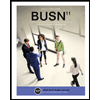
BUSN 11 Introduction to Business Student Edition
Business
ISBN:9781337407137
Author:Kelly
Publisher:Cengage Learning
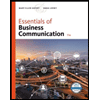
Essentials of Business Communication (MindTap Cou...
Business
ISBN:9781337386494
Author:Mary Ellen Guffey, Dana Loewy
Publisher:Cengage Learning
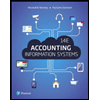
Accounting Information Systems (14th Edition)
Business
ISBN:9780134474021
Author:Marshall B. Romney, Paul J. Steinbart
Publisher:PEARSON
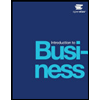
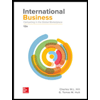
International Business: Competing in the Global M...
Business
ISBN:9781259929441
Author:Charles W. L. Hill Dr, G. Tomas M. Hult
Publisher:McGraw-Hill Education
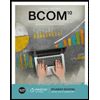
Related Questions
- Subject: Procurement & sourcing Q): Under which H.S Code Cherat Packaging Ltd. clear their raw material of Granules & Kraft paper? Q): What is the total procurement expenses of 2022 & 2021 of Cherat packaging?arrow_forwardRequirement Provide at least two (2) examples/case studies of international modes of entry utilized by multinational corporations in Japan, USA and Singapore that have succeeded or failed. The name of the multinational must be clearly stated in each example. Be sure to state the mode of entry utilized in each example in each country. Why do you think they would have succeeded or failed in each example included? Provide details on this. Ruberic Examples/case studies of international mode of entry strategies of multinational corporations in Japan, USA and Singapore that have succeeded or failedo Names of the multinationals clearly stated o Mode of entry in each case stated o Why they have failed/succeeded stated with details providedarrow_forwardQuestion 2 a. Discuss the main channels through which interest rates affect the market for owner-occupied houses and how the prices of owner-occupied houses will.be. affected in the short and long term if interest rates increase in 2022. b. Discuss whether during the coronavirus crisis in 2020 there were any movements of the demand curve and/or the new supply curve in the Cyprus residential real estate market. Specifically.explain in which direction the demand curve and/or the. new.sUrply.curxe.for.residentialreal estate must have.moved and what specific. factors.may.haxE.caused such amexe.at.mexements. c. What is the short-term and long-term effect on residential real estate prices of the demand curve and/or new supply movements that you discussed in (b). d. According to a recent study, the elasticity of the supply of residential real estate in Nicosia is 1.4 and in Limassol 1.9. If we assume that in 2022 the demand for residential real estate will increase by 8% in both cities and…arrow_forward
- Exercise of Transportation Problem Q1: Metro Water Company (Distributing natural resource) Metro Water District is an agency that administers water distribution in a large geographic region. The region is arid, so water must be brought in from outsid e the region. There are three sources of imported water, which are Colombo River, Sa cron River, and Calorie River. Four cities is in need of water, which are city Berdoo, L OS Devils, San Go, and Hollyglass. The cost for taking water from each river and s ending water to each city is different, shown in the following table. Metro Water Comp any wants to minimize the total cost when distributing the needed water. How mục h water should Metro take from each river, and how much should they send from each river to each city Cost per Acre Foot Berdoo Los Devils San Go Hollyglass Available Colombo River $160 $130 $220 $170 5 Sacron River 140 130 190 150 6 Calorie River 190 200 230 5 - Needed 4 1.5 (million acre feet)arrow_forwardQuestion 1 Assume JBD decides to expand the sale of its products into new markets outside of the European Union (EU). Discuss how each element of PESTLE analysis could help inform this decision.arrow_forwardSubject: Channel management Q4): What does channel management encompass?arrow_forward
- Question 4) plz helparrow_forwardDiscussion 5: Brand Equity Interbrand is a brand consultancy, specializing in areas such as brand strategy, brand analytics, brand valuation, corporate design, digital brand management, packaging design, and naming. 1) Choose at least 20 brands in 2021 on https://interbrand.com/best-global-brands and choose at least 20 brands in 2011 on https://www.rankingthebrands.com/The-Brand-Rankings.aspx?rankingID=37&year=368, then compare the top 20 in 2021 with the top 20 from 2011, which you selected the 20 brands from 2021 and 2011.arrow_forwardDiscussion 5: Brand Equity Interbrand is a brand consultancy, specializing in areas such as brand strategy, brand analytics, brand valuation, corporate design, digital brand management, packaging design, and naming. 1) Choose at least 20 brands in 2021 on https://interbrand.com/best-global-brands and choose at least 20 brands in 2011 on https://www.rankingthebrands.com/The-Brand-Rankings.aspx?rankingID=37&year=368 2) Compare the top 20 in 2021 with the top 20 from 2011. 3) Choose one company that was in the top 20 in one of those years, but not in the other. Which one of those benefits of brand equity are (Perceived Quality, Brand Connections, and Brand Loyalty), explain why the company you chose moved into the top 20 or dropped off.arrow_forward
- Discussion 5: Brand Equity Interbrand is a brand consultancy, specializing in areas such as brand strategy, brand analytics, brand valuation, corporate design, digital brand management, packaging design, and naming. 1) Choose at least 20 brands in 2021 on https://interbrand.com/best-global-brands and choose at least 20 brands in 2011 on https://www.rankingthebrands.com/The-Brand-Rankings.aspx?rankingID=37&year=368, then compare the top 20 in 2021 with the top 20 from 2011, which you selected the 20 brands from 2021 and 2011. 2) Choose one company that was in the top 20 in one of those years, but not in the other. Which one of those benefits of brand equity are (Perceived Quality, Brand Connections, and Brand Loyalty), explain why the company you chose moved into the top 20 or dropped off.arrow_forwardQuestion 1 Strategic alliances help a firm's diversification efforts by offering access to a new product, segment, or region. Group of answer choices True False Question 2 In a typical joint venture, firm A and firm B operate a unit of firm B together. Group of answer choices True False Question 3 Well drafted contracts can help mitigate some of the potential downsides of a strategic alliance. Group of answer choices True False Question 4 Strategic alliances are preferred over vertical integration when the potential partner possesses capabilities that would be needed for the new initiative. Group of answer choices True Falsearrow_forwardQuestion 1: Answer ONLY one A- The figure below shows the Iraqi Airway's passenger traffic from 2011 to 2015. Write a report describing the information shown. (word count=140-160 words ONLY). 6 000 4 910 5 000 4 110 4 000 3 000 1 990 2 000 1 747 1 300 1 120 1 060 1 000 370 270 90 2011 2012 2013 2014 2015 Domestic passengers International passengers Number of pass engers in thousandsarrow_forward
arrow_back_ios
SEE MORE QUESTIONS
arrow_forward_ios
Recommended textbooks for you
 BUSN 11 Introduction to Business Student EditionBusinessISBN:9781337407137Author:KellyPublisher:Cengage Learning
BUSN 11 Introduction to Business Student EditionBusinessISBN:9781337407137Author:KellyPublisher:Cengage Learning Essentials of Business Communication (MindTap Cou...BusinessISBN:9781337386494Author:Mary Ellen Guffey, Dana LoewyPublisher:Cengage Learning
Essentials of Business Communication (MindTap Cou...BusinessISBN:9781337386494Author:Mary Ellen Guffey, Dana LoewyPublisher:Cengage Learning Accounting Information Systems (14th Edition)BusinessISBN:9780134474021Author:Marshall B. Romney, Paul J. SteinbartPublisher:PEARSON
Accounting Information Systems (14th Edition)BusinessISBN:9780134474021Author:Marshall B. Romney, Paul J. SteinbartPublisher:PEARSON
 International Business: Competing in the Global M...BusinessISBN:9781259929441Author:Charles W. L. Hill Dr, G. Tomas M. HultPublisher:McGraw-Hill Education
International Business: Competing in the Global M...BusinessISBN:9781259929441Author:Charles W. L. Hill Dr, G. Tomas M. HultPublisher:McGraw-Hill Education

BUSN 11 Introduction to Business Student Edition
Business
ISBN:9781337407137
Author:Kelly
Publisher:Cengage Learning

Essentials of Business Communication (MindTap Cou...
Business
ISBN:9781337386494
Author:Mary Ellen Guffey, Dana Loewy
Publisher:Cengage Learning

Accounting Information Systems (14th Edition)
Business
ISBN:9780134474021
Author:Marshall B. Romney, Paul J. Steinbart
Publisher:PEARSON


International Business: Competing in the Global M...
Business
ISBN:9781259929441
Author:Charles W. L. Hill Dr, G. Tomas M. Hult
Publisher:McGraw-Hill Education
